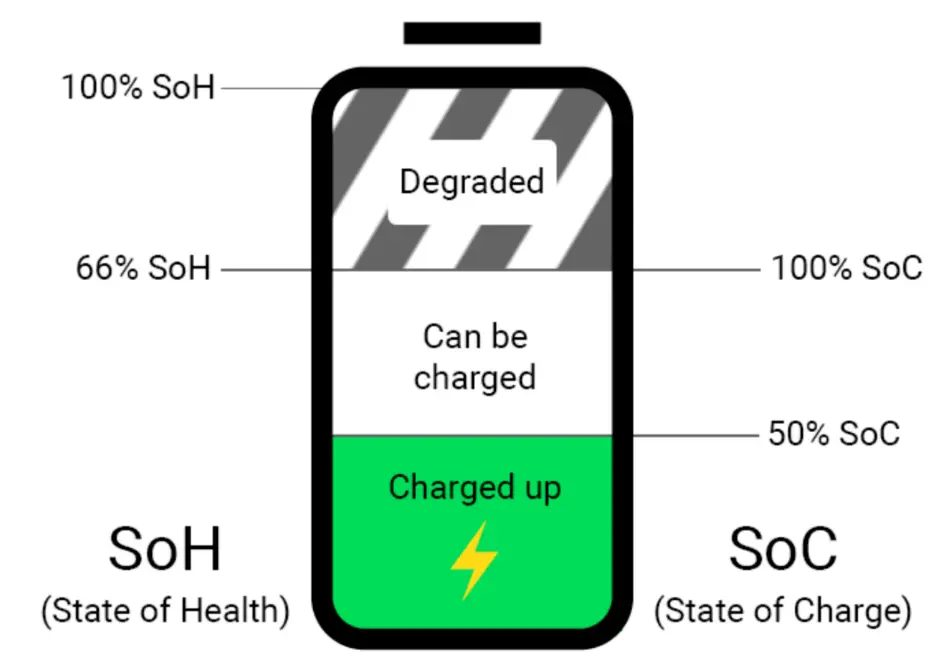State Of Health (SOH) and State Of Charge (SOC) are significant in determining a battery’s charge level and overall health. This is true for any battery technology.
Typically, a Battery Management System monitors and controls these parameters and gives crucial insights into a battery’s capacity and charge level.
A BMS is responsible for improving SOH and SOC. In this article, let’s learn more about What Is SOH And SOC In Battery.
What Is SOH In Battery?
SOH means the State Of Health of a battery. It tells us how healthy the battery is. The BMS tells us about the SOH and controls different parameters to improve SOH.
SOH degrades over time. When the SOH degrades, the battery can not hold the same charge.
SOH also indicates how long the battery might last and when it is time for replacement.
The number of charge and discharge cycles affects a battery’s SOH. Temperature and the charging pattern also affect it.
For example, if you charge the battery to 100% all the time, the SOH might fall drastically within a short period. The same is true if you allow the battery to drop below 10% charge all the time.
Various environmental factors, such as temperature and humidity, also play a big role in determining a battery’s State Of Health (SOH).
What Is SOC In Battery?
SOC stands for State Of Charge, which is the percentage of charge at a given point in time. When you connect a charger to a battery, it shows the charging percentage, which is called State Of Charge (SOC).
SOC increases with higher battery voltage and declines as the battery drains. The SOH, or simply put, battery life, decreases as the number of charge and discharge cycles rises.
Role Of Battery Management System In SOH And SOC
The Battery Management System plays a big role in monitoring and controlling the parameters to improve a battery’s SOH and SOC. Here is a summary of some of the activities that BMS does.

Monitor Parameters For SOH And SOC
BMS constantly monitors the battery temperature, voltage, and the current flowing in and out of the battery.
That way, it can control the parameters that might affect the battery SOH if it operates beyond the safe limits.
Ensure Safe Operation
BMS ensures the safety of the battery. It controls the battery voltage, temperature, current, and other parameters to ensure safe operation.
It protects the battery from overheating and overcharging. Both are dangerous for the overall safety of the battery.
BMS ensures that the battery is not operating beyond its safe limits. For example, if the battery is overheating, it prevents you from starting the vehicle. That way, it protects the battery and the vehicle.
Sometimes, when we charge the battery, we forget to plug it off. Battery Management Systems automatically cut off the power when the battery is fully charged, protecting it from overcharging.
Usage Optimization And Battery Life Improvement
A BMS can optimize how you use the battery. It will not allow you to use the battery if it is outside its safety limits.
It does all these things, ultimately improving the overall battery health. A battery with good SOH will last long.